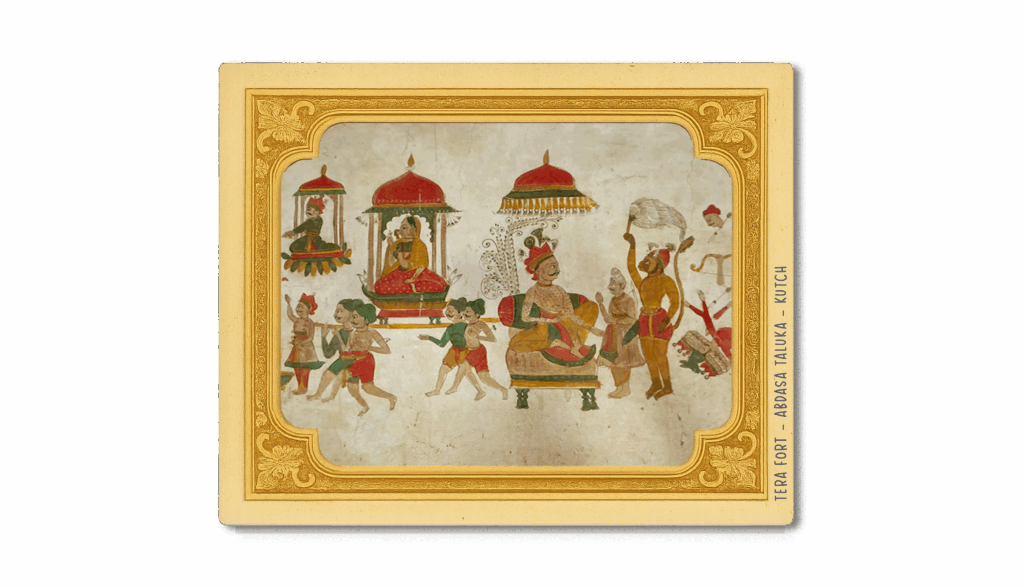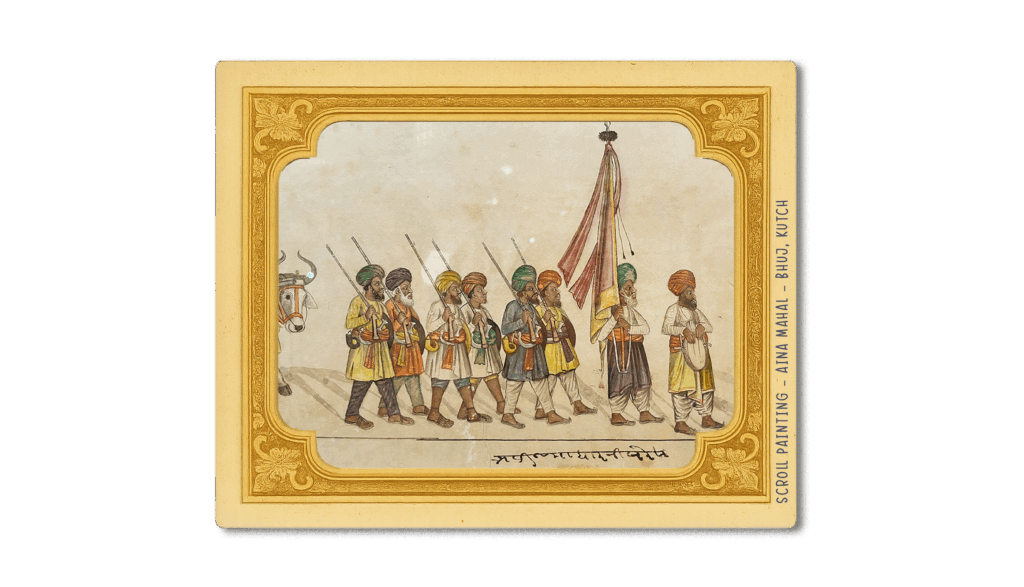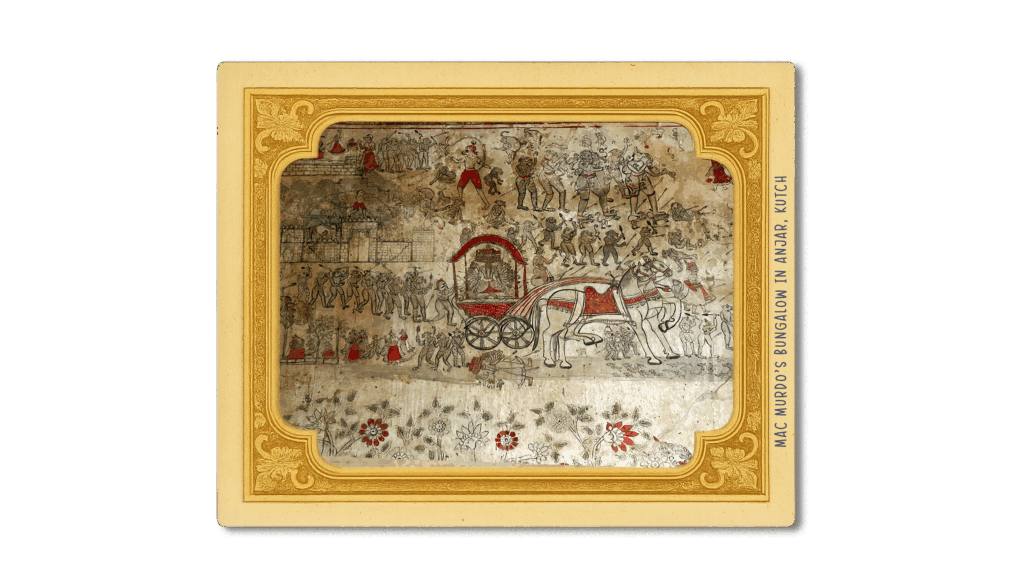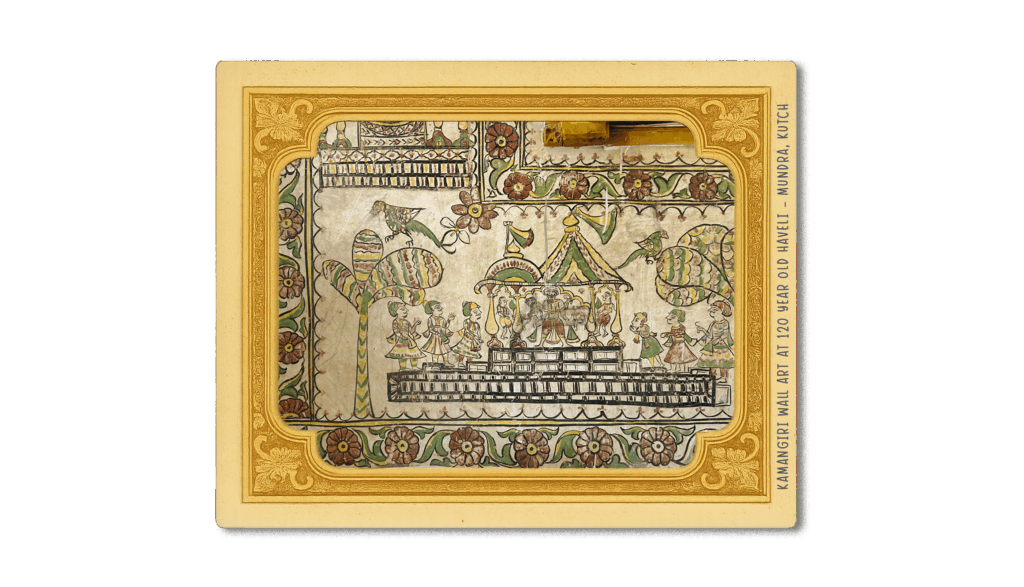Kamangiri: A Forgotten Art Speaks Again
Kamangiri: A Forgotten Art Speaks Again
What began as an exploration of architecture soon became a deeper search for stories not written in books, but painted across quiet corridors and fading lime walls.

In the course of our fieldwork across Kutch, we encountered a mural tradition that once thrived but has now nearly disappeared from public memory. This is Kamangiri a visual storytelling practice that once adorned the walls of merchant homes, palaces, and public buildings between the mid-18th and early 20th century.
Our search led us to places like Tera Fort, MacMurdo’s Bungalow in Anjar, and a private haveli in Mundra. In each of these spaces, we found layers of story some still vibrant, others reduced to fragile fragments. Yet even those faded images spoke volumes. They revealed a once-flourishing art that reflected the life, beliefs, and imagination of its time.

Historically, the Kamangars whose name the art later inherited were not painters by training. They were skilled artisans known for decorating bows, shields, and ceremonial arms for the royal courts of Kutch. Over time, they extended their artistry to the walls of Jain traders, Bhatia patrons, and even royal estates. Their paintings traveled beyond walls, too onto scrolls commissioned for palace halls.

Kamangiri is not a school of art. There is no defined style or written code. It is a tradition passed through hands, shaped by place and patronage. Sometimes it told stories from Jain cosmology, sometimes the Ramayana or Krishna Leela. Other times, it captured moments from everyday life traders, hunters, musicians, elephants. No two murals were alike, but all shared bold lines, strong composition, and a deep sense of craft.

What makes Kamangiri truly special is the process. The walls were prepared with care multiple layers of lime plaster, smoothed and refined. The final layer had to be painted while still damp. There was no room for error. The pigments were natural made from stones, flowers, soil and sealed into the surface through gentle burnishing.
We didn’t know then that Kamangiri would take us on a journey lasting over 14 months and still a few months to go through villages, through forgotten buildings, through history told not in text, but in texture. We’ve learned slowly, from the remnants, from rare photographs, and from people who remembered what time had nearly erased.
There were moments of joy and many of frustration. The materials were hard to source. The results were never guaranteed. But again and again, the right people crossed our path, and somehow, we kept going. We believe this is more than chance it’s the universe guiding us to listen deeper. Because Kamangiri is not just pigment on plaster. It is a cultural record. A lived language. A vanishing echo that still lingers in the corners of forts and havelis.
These walls are among the last places where Kamangiri survives in its full form. They must be preserved not just as artwork, but as memory, as voice.
We’re still listening.
And we hope to share more as this journey unfolds.





